How long did your induction take
Are You Being Induced? Here's How Long It Takes & What To Expect
Did you just find out that you’re going to be induced?
Do you want to know what it entails and what to expect?
You are in the right place! I have personally induced over 500 women!
In this post, you will learn:
- What an induction of labor is and what to expect,
- How your labor gets induced, and
- How long a typical induction of labor takes.
Are you excited?
Let’s get started.
Disclaimer
***READ FIRST***
Although I am a doctor, I am not your doctor. This information is for informational purposes only and should not substitute the advice from your healthcare professional. All kinds of exercise and dietary changes are potentially dangerous, and those who do not seek counsel from the appropriate health care authority assume the liability of any injury which may occur. Please read my full Disclaimer for more information. Also, this post may contain affiliate links: meaning I may receive a commission if you use them.
Ok, moving on.
What to expect when you’re being induced
When you are being induced there are several things you should expect:
- Expect the entire process to take anywhere from 24-48 hours.
- Depending on the type of induction, expect to have regular painful contractions (every 2-3 minutes).
- Expect to have a vaginal exam every 4-6 hours.
- Expect to have electronic continuous monitoring of your baby’s heart rate.
- Expect to not be able to eat solid foods (you will likely be placed on a clear liquid diet)
- Expect to not be able to walk around after your cervix reaches a certain level of dilation or after your amniotic membranes have been ruptured.
- You may or may not be able to have a support person in the room, especially because of the pandemic.
Okay, now that we have that out of the way, let’s go over all of these in a lot more detail.
How long does it take to give birth after being induced?
An induction of labor can take anywhere from 12 to 24 hours until your baby is born. If you include cervical ripening, the entire process can take 48 hours or more.
Unfortunately, it is impossible to predict how long it will take for you, but we do have standard averages.
It also largely depends on the type of induction you are having.
The different types of induction Methods
There are many different ways we can induce your labor.
The most important factor to determine which induction agent to use is your Bishop Score.
The Bishop Score takes into account:
- How many centimeters dilated you are,
- How effaced your cervix is, (or how thin your cervix is; it’s normally thick)
- The position of your cervix (is it way back posterior, more mid-position, or anterior)
- The consistency of your cervix, (is it firm, medium, or soft), and
- The station.
 (how low is the fetal head relative to your pelvic bone).
(how low is the fetal head relative to your pelvic bone).
Based on these 5 factors, your physician will determine a numerical value from 0 – 13.
| Score | Dilation | Effacement | Consistency | Position | Station |
|---|---|---|---|---|---|
| 0 | Closed | 0-30% | Firm | Posterior | -3 |
| 1 | 1-2 | 40-50% | Medium | Mid | -2 |
| 2 | 3-4 | 60-70% | Soft | Anterior | -1,0 |
| 3 | 5-6 | 80% | – | – | +1 |
A value greater than 6 indicates a “favorable cervix” meaning you are more likely to have a successful induction.
A value less than 6 indicates a “less favorable bishop score” signifying that your chance of successful vaginal birth is decreased.
If your bishop score is less than 6, we will need to first ripen your cervix.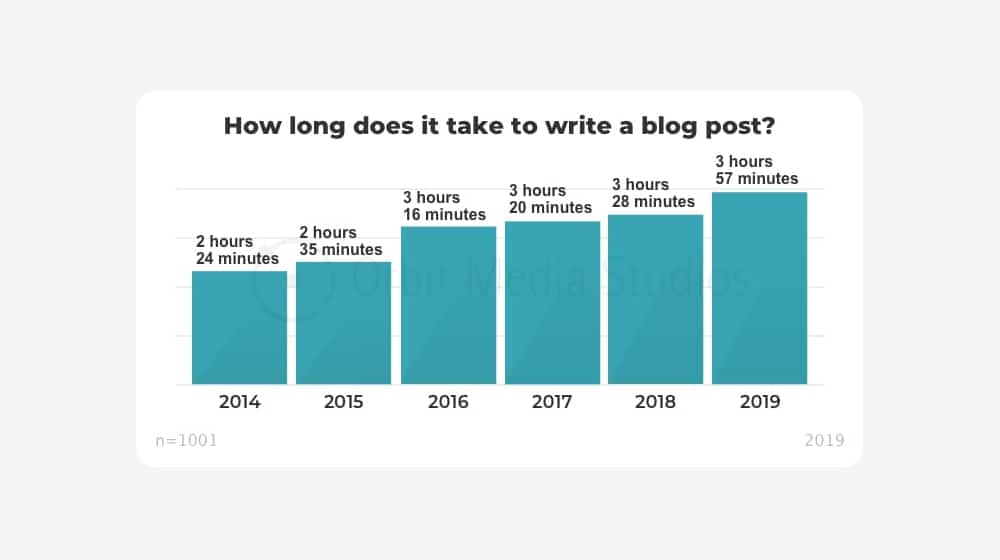 In other words, we try to soften and prepare your cervix for dilation.
In other words, we try to soften and prepare your cervix for dilation.
Let’s talk about how we do that.
Prostaglandin Medications
Prostaglandins are the most commonly used medications for ripening or preparing your cervix for labor induction.
There are two types of prostaglandin medications:
- Misoprostol, also known as Cytotec, and
- Dinoprostone, also known as Cervidil
Cytotec is a prostaglandin E1 analogue that helps to soften the cervix and it often causes uterine contractions.
This medication comes in pill form and could be placed in the vagina or under the tongue.
It could be given every 3-4 hours for a maximum of 6 doses.
I do want to say, this medication is contraindicated if you are attempting a trial of labor after cesarean (TOLAC).
CervidilCervidil is a prostaglandin E2 analogue that is meant to soften the cervix. It may cause dilation and contractions as well.
This medication looks like a small skinny tampon with a long string, and it is placed deep into the vagina to start the ripening process.
The cervidil will be removed:
- if you begin dilating,
- if you begin contracting excessively,
- or if 12 hours have passed (whichever comes first).
Aside from medications, we also have another way to dilate or ripen the cervix.
Mechanical Dilation
Mechanical dilation uses pressure to dilate your cervix, rather than medications.
This can be done using a:
- Cook balloon, or
- Foley catheter balloon
One of these balloons will be inserted into your cervix and the balloon will be filled with sterile water.
You may feel a lot of pressure as the balloon is filling. So if you eventually want an epidural, feel free to get one prior to balloon placement.
The balloon will stay inserted in the cervix until your cervix is about 4 centimeters dilated or after 12 hours (whichever comes first).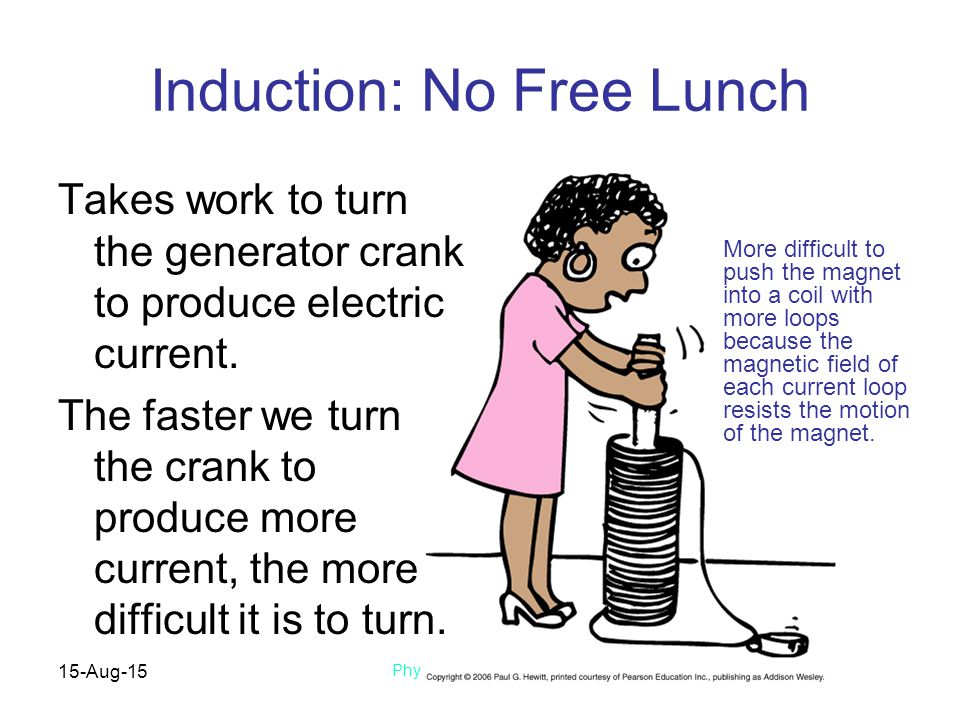
A mechanical dilation is a great option for:
- women who are about 0.5-1 centimeter dilated, and/or
- for women who cannot receive additional prostaglandin medication.
It is also a great option if you are considering a trial of labor after cesarean (TOLAC).
Okay, so that’s how to ripen the cervix and get a couple of centimeters of dilation.
Now let’s get to the full-blown induction.
Uterotonic Medications
The most commonly used uterotonic mediation is oxytocin also known as Pitocin.
Oxytocin is a hormone that is normally released by the posterior pituitary gland when the onset of labor occurs and also during breastfeeding.
We give it through the IV to either initiate uterine contractions or augment your labor.
Pitocin mostly works at the uterine receptors to increase the frequency, duration, and amplitude of your contractions.
Once you are on oxytocin, most hospitals will not allow you to eat in case of an emergency (i. e needing an urgent cesarean section).
e needing an urgent cesarean section).
And last but not least we have another intervention up our sleeve…
Amniotomy
Amniotomy is a process in which we “break your water.” This is known as AROM, or artificial rupture of membranes.
This is a bedside procedure that occurs using a small hook to pierce the amniotic sac which causes the amniotic fluid to leak out.
Don’t worry this will not hurt!
After an amniotomy, you will continue to leak- this is completely normal.
Sometimes, an amniotomy alone can get your contractions going. But we often use this in conjunction with pitocin to achieve a regular contraction pattern.
So those are all the ways in which we can induce your labor starting from a closed cervix.
Now let’s talk about timing.
How Long Does An Induction Take (Step By Step)
As I mentioned before, an induction of labor can take upwards of 48 hours in first-time moms and up to 24 hours in women who have given birth before.
Let’s discuss the three stages of labor and how long each one takes.
Inducing The First Stage of Labor
The first stage of labor corresponds to when you are 0 cm dilated, to 10 cm dilated.
It is broken up into 2 parts, the Latent Phase & The Active Phase
The Latent Phase
The latent phase is the time it takes to get from 0 – 6 centimeters.
- This can take up to 20 hours in primiparous women aka, first-time moms and
- Up to 14 hours in multiparous women aka women who have had a prior delivery.
Yes, I know what you are thinking, it is a long time.
But you have to understand that your cervix and body weren’t yet ready for labor.
You really must be patient during this stage of labor and stay positive.
The Active Phase
Active labor occurs from the time you reach 6 centimeters to the time you are fully dilated or 10 centimeters.
- This stage can last anywhere from 0 – 6 hours on average depending on your parity.

For multiparous women, this stage can be very short!
There have been so many instances where I have seen women go from 6 centimeters to fully dilated in less than an hour.
Studies have shown that after 6 centimeters dilation, labor accelerated faster in multiparous women compared to nulliparous women.
On the other hand, nulliparous women with and without epidural had an active phase of approximately 3.6 and 2.8 hours, respectively.
The Second Stage of Labor
The second stage of labor occurs from full dilatation to delivery of the fetus.
This stage could last anywhere from 1- 4 hours depending on if you are nulliparous or multiparous, the type of pelvis you have, the position of the baby, and whether or not you have an epidural.
Some providers will have you start pushing as soon as you reach full dilatation whereas others will allow you to “labor down.”
Laboring down is a process in which you allow the fetal head to descend further down into the pelvis before you start pushing.
The thought process is that laboring down will help prevent you from pushing for hours, which can tire you out.
Believe it or not, the average time it takes to push a baby out is 90 minutes! It’s not instantaneous like you see in the movies.
To learn more about pushing, how to push effectively, and exercises you could do to prepare you for labor, click here.
The Third Stage of Labor
The third stage of labor occurs from delivery of the fetus to delivery of the placenta.
This should take no longer than 30 minutes.
If after 30 minutes the placenta does not deliver the placenta has to be removed manually.
Your provider will either manually deliver the placenta at the bedside, or take you to the operating room to surgically remove the placenta to reduce your risk of postpartum hemorrhage and infection.
Here is a table of how long a normal induction of labor can take.
| Stage of Labor | Nulliparous Woman | Multiparous Woman |
|---|---|---|
| Cervical Ripening | Up to 12 hours | Usually not needed |
| Latent Phase of Labor (0-5 cm dilated) | Up to 20 hours | Up to 14 hours |
| Active Phase of Labor (6-10 cm dilated) | ~ 6 hours | 0-6 hours |
| The Second Stage (Delivery of the baby) | 1-4 hours | 0-3 hours |
| The Third Stage (Delivery of placenta) | Up to 30 min | Up to 30 min |
The Immediate Postpartum
The fourth stage of labor has been described by some to be the immediate postpartum period.
During this time your provider will:
- assess the tone of your uterus to ensure it has started to contract down.
- assess and repair any lacerations.
- assess your vital signs including blood pressure and heart rate.
- assess the amount of uterine/vaginal bleeding you are experiencing.
This is one of the most important phases of labor as hemorrhage is one of the leading causes of maternal morbidity and mortality in developed and developing nations.
Is induced Labor more painful Than Natural Labor?
Induced labor can be more painful than natural labor.
Pitocin often causes stronger, longer, and more frequent uterine contractions than natural contractions.
Oftentimes, women will get an epidural due to the intensity of the pain.
With that said, I have seen plenty of women get induced without pain medication.
It is possible!
However, I always tell my patients, if you are in pain and you cannot tolerate the pain it is OKAY to have pain relief.
YOU DON’T HAVE TO BE A HERO OR PROVE ANYTHING TO ANYONE.
Getting a break from the pain of the contractions could help you relax and get some rest before needing to push.
Can I Get An Epidural Before The Induction?
You can get an epidural at any point in your induction!
There is no minimum number of centimeters dilated you need to be.
I do want to say however, you must be able to sit still for epidural placement.
So please don’t wait until the pain is so severe that you are unable to sit still.
Also, once you get the epidural, you will be confined to the bed. So no more walking around.
Is being induced harmful to the baby?
The actual induction of labor is not harmful to the baby, however, your baby may not tolerate the frequent contractions.
This is why you will be connected to an electronic fetal heart rate monitor when we start your induction.
The baby communicates with us through its heart rate.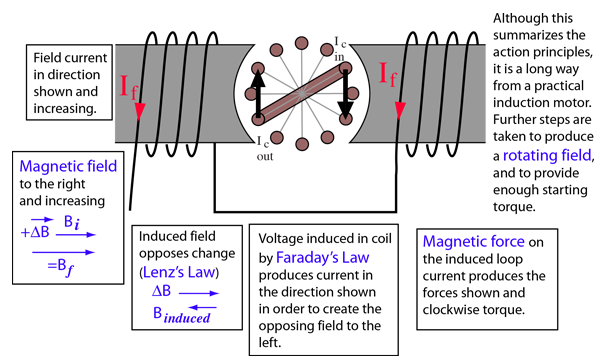
If the baby is in distress, we will know.
Unfortunately, all medications used for induction of labor have side effects and because of that, we need to keep a close eye on your baby’s heart rate tracing.
Do you stay in the hospital after being induced?
Yes, you will be admitted to the hospital for an induction of labor and will stay in the hospital for at least 1-2 days postpartum or 2-4 days post-c-section.
We must monitor you in the early postpartum period to check your bleeding, your blood pressure, and incision if you had a cesarean delivery.
Other Related Questions
Is induction easier if you are already dilated?
Yes, an induction of labor is easier if you are already dilated. The more dilated you are, the more favorable your Bishop Score will be.
If your Bishop Score is 6 or greater, your induction is more likely to be successful than if you have a closed cervix giving you a bishop score of less than 6.
When you are dilated, we do not need to spend time ripening and preparing the cervix for labor as it is already dilated.
In this case, we can jump straight to the induction agents.
**Also if you have had a vaginal delivery in the past, your induction is more likely to be easier and faster.**
How long does induction take for the second baby?
An induction of labor is usually much quicker for a second baby compared to the first. On average, it can take up to 12-24 hours for second-time moms to give birth after induction.
Why do doctors push inductions?
The most common reason why doctors push inductions is for a medical indication.
Our goal is “healthy mom & healthy baby.”
Inductions are recommended when we determine that it is no longer beneficial for you or your baby to remain inside the uterus.
We want to do everything in our power to ensure the health and wellbeing of both you and your baby.
Are there natural ways to induce labor?
The most effective, natural way to induce your labor is known as membrane sweeping.
Membrane sweeping can be done during a vaginal exam if your cervix is at least 1 cm dilated.
It refers to physically separating the amniotic sac / membrane from the cervix with a finger sweep.
This should only be performed by a doctor or a midwife, and ONLY after you reached full term (39 weeks). That’s because a membrane sweep can lead to uterine contractions and possible rupture of the amniotic membranes.
Aside from membrane sweeping, some providers will encourage women to walk to help induce labor.
Although there haven’t been many scientific studies to prove this, walking is a great way to exercise during the third trimester. I talk about this more in walking to induce labor.
Is inducing labor at 39 weeks safe?
39 weeks is considered full-term. Induction of labor is very safe for you and your baby at this time.
37 – 38 weeks gestation is considered early term and thus we do not electively induce labor at this time.
In fact, there was a famous study done in 2018 called the ARRIVE Trial which compared outcomes in low-risk women at 39 weeks to an elective induction of labor or allowing them to go into spontaneous labor.
This trial showed a decreased rate of cesarean delivery in those women who were electively induced at 39 weeks compared to the women who were expectantly managed.
Is it safe at 38 weeks or less?
The only reason we would induce you prior to 39 weeks is if you have a pregnancy or fetal condition that can have negative consequences by prolonging your pregnancy.
Common examples include:
- Gestational Diabetes
- Gestational Hypertension
- Premature Rupture of Membranes
- Preeclampsia
- Chronic Hypertension
- Cholestasis of Pregnancy
- Growth Restricted Baby
- Twins
- Low Fluid
Do’s and Dont’s Before Being Induced
I do want to mention there are many things that people will tell you to do to induce your labor but have not been proven to be effective.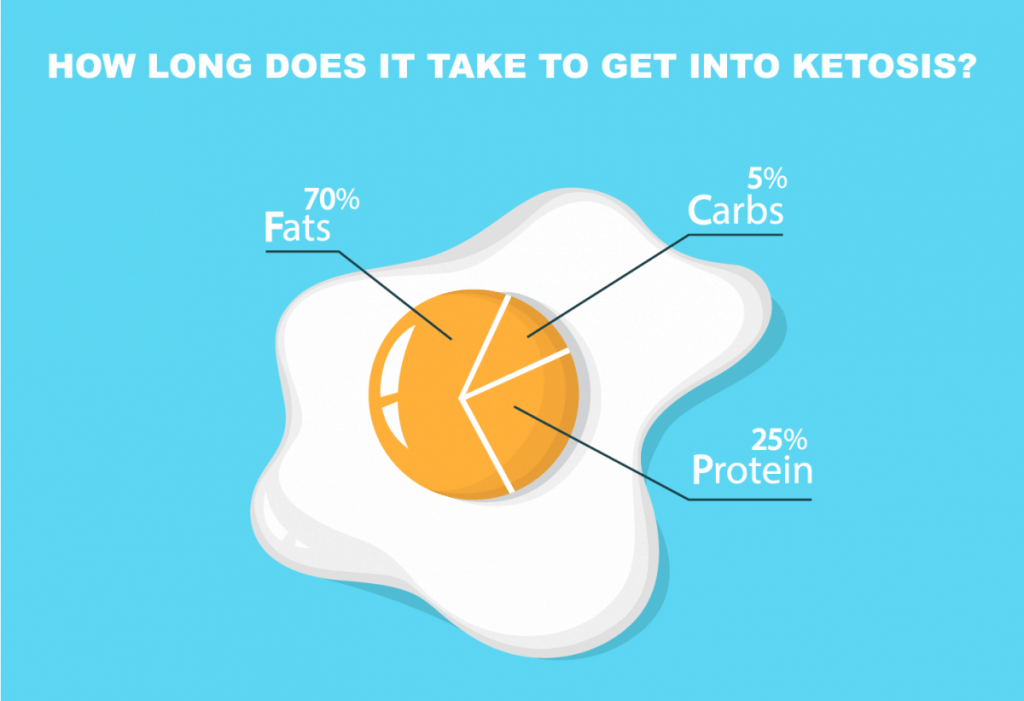
The following is a list of methods that are not proven or recommended:
- Nipple stimulation
- Castor oil
- Primrose oil
- Spicy food
- Massage
- Acupuncture
Now let’s talk about what you should do.
What Should I Do The Day Before Labor Induction?
The day before your induction of labor should be spent doing something for yourself.
Especially if this is your first baby!
Go out to eat with your partner as you may not be able to eat in labor, take a nice stroll as you may be stuck in bed for hours on end, or watch a movie.
Just do something that is relaxing and not stressful.
You should also make sure your baby bag is packed and you have everything you need for the hospital.
Don’t forget to pack a comfortable pair of slippers, possibly your favorite pillow and/or blanket, and chapstick as your lips get extremely chapped when pushing!
What Are The Disadvantages and Risks of Induced Labor?
I do want to mention that inductions of labor can be associated with some risks and disadvantages.
Those risks include:
- Infection
- Tachysystole (Frequent contractions)
- Failed induction
When you are admitted to the labor floor, typically you will have a cervical exam every 4-6 hours depending on the institution, to assess for change.
If you are being induced for 24-48 hours that can be a lot of examinations!
Although we are using sterile gloves, the vagina has A LOT of bacteria including group b streptococcus (GBS) that is present in some women. Thus, each time we examine you there is a risk of introducing bacteria into the uterus.
The risk of infection is further increased if your amniotic membranes have been ruptured for several hours.
To decrease the risk of infection, most physicians will limit the number of examinations you receive while in labor and/or give you antibiotics if you are found to be GBS positive.
2. TachysystoleTachysystole is defined as having too many uterine contractions, too close together.
The actual definition is the presence of more than 5 uterine contractions in a ten-minute period averaged over 30 minutes.
Tachysystole is considered a risk of induction because it can cause your baby to become distressed.
Think about it- as the uterus contracts the baby, placenta, and umbilical cord are getting squeezed.
During tachysystole, the baby only has about one minute of relaxation to “catch its breath.”
Some babies do fine and can tolerate it, whereas other babies cannot.
If your baby is in distress, we can give medication to relax the uterus to allow your baby more time to recover.
3. Possible need for cesarean sectionOnce we start an induction – the clock has started.
Depending on how many centimeters dilated you are, you have to show signs of progress. If you are not, you will need a c-section.
With that said, the need for a cesarean section can occur even if you don’t have an induction.
Studies show that there is no increased risk of cesarean section during an induction of labor.
Final Words on Labor Induction
So there you have everything you need to know about labor induction.
Do you feel ready?
Now I want to hear from you.
Did you have your labor induced, or are you scheduled for an induction?
What was your experience like or what are you most worried about?
Comment below and let me know!
Related Posts on Pregnancy
- 10 Unique Exercises to Prepare You For Labor
- Does Walking Help to Induce Labor
- What Muscles Are Cut During C Section
References:
- Zhang J, Landy HJ, Ware Branch D, et al. Contemporary patterns of spontaneous labor with normal neonatal outcomes. Obstet Gynecol. 2010;116(6):1281-1287. doi:10.1097/AOG.0b013e3181fdef6e
- Finucane EM, Murphy DJ, Biesty LM, et al. Membrane sweeping for induction of labour. Cochrane Database Syst Rev.
 2020;2(2):CD000451. Published 2020 Feb 27. doi:10.1002/14651858.CD000451.pub3
2020;2(2):CD000451. Published 2020 Feb 27. doi:10.1002/14651858.CD000451.pub3 - Grobman WA, Rice MM, Reddy UM, et al. Labor Induction versus Expectant Management in Low-Risk Nulliparous Women. N Engl J Med. 2018;379(6):513-523. doi:10.1056/NEJMoa1800566
- Wood S, Cooper S, Ross S. Does induction of labour increase the risk of caesarean section? A systematic review and meta-analysis of trials in women with intact membranes. BJOG. 2014;121(6):674-685. doi:10.1111/1471-0528.12328
Get Four Free Workouts To Help Strengthen Your Pelvic Floor & Heal Your Mommy Tummy!
YES- I WANT THE PDF!
Brittany N Robles, MD, MPH, CPT
Brittany Robles is a full-time OBGYN, a NASM certified personal trainer, and health & fitness, expert. She holds a Masters of Public Health degree in maternal health with a special interest in exercise and nutrition. She is also the co-author of The White Coat Trainer. Learn more about her here.
Learn more about her here.
Sharing is Caring – Send This To A Mom In Need!
How Long Does an Induction of Labor Take? ~ From a labor pro!
Induction of labor is definitely a process. How long will it take? What should you expect? Pregnant women often wonder how long will it take until they give birth?
But first, why would you listen to me?
Hi, I’m Hilary — The Pregnancy Nurse 👩⚕️. I have been a nurse since 1997 and I have 20 years of OB nursing experience, I am also the curly head behind Pulling Curls and The Online Prenatal Class for Couples. 🩺 I have started thousands of inductions (and even had one of my own) so I really am a pro in this area. While no one can tell you exactly how long your induction will take — there are a lot of factors that can help us give a guess.
In this Article:
- What is Dilation
- What is an Unfavorable Cervix?
- Things They Can Do to Speed-Up Labor
- Things You Can Do to Speed-Up Labor
- Reasons for Induction (elective vs Medically-Necessary
- Textbook Labor Plan
While this article is top notch, if you really want to understand inductions from making the choice clear to when your baby is born — I really recommend my class Inductions Made Easy. In less than 20 minutes you’ll be fully informed in:
In less than 20 minutes you’ll be fully informed in:
- How to make the choice for an induction
- What normally happens at an induction
- Common induction outcomes.
How long will my induction take?
Things that affect labor timing
There are a few things that can affect how long it will likely take for your cervix to open.
We qualify these as something called the “bishop’s score”. It measures how prepared your cervix is to open. It’s on a scale of 0 to 13. You don’t need to know your bishop score, but some hospitals won’t do an elective induction if your cervix isn’t open/soft enough.
What/Where is your Cervix?
Your Cervix is at the end of your vagina, it’s at the opening of your uterus.
Cervical Dilation
This means how OPEN your cervix is. I have a whole post that explains vaginal dilation on my sister site, but what you need to know is that as the baby progresses into your pelvis, the cervix opens. Kind of like when you push your head through a tight sweater neck.
Kind of like when you push your head through a tight sweater neck.
The numbers go from 0 (or closed) to 10 (ten is actually when your cervix disappears behind the baby’s head).
The more open your cervix is, it normally means your induction will be shorter. Which make sense, as you don’t start to push the baby out til’ 10 centimeters (cm).
Cervical Thinning
If you keep the “head through a sweater” analogy, you’ll know that the sweater thins at the neck as you pull your head through. The same thing happens with your cervix.
Medical providers measure this as a percentage. Anything more than 50% normally just called “thick” (frankly, it’s impossible for us to know how thick your cervix is in the beginning).
We CAN measure the length of your cervix but that is done by ulrasound, rather than our hand.
That all being said, if your cervix is thick, it normally takes longer until the baby comes out.
Baby’s Station
It’s an odd way to say it, but this measures how above or below your ischial spines (your butt bones) the baby is.
I think it’s easier to envision how high or low in your pelvis the baby is.
If the baby is high it will take longer for it to descend.
NORMALLY, the lower your baby is, the more it will start to open your cervix (again, as you push your head further into the sweater it opens more).
Consistancy of your Cervix
This means how firm or soft it is.
Early in pregnancy your cervix is hard and firm like rubber, then it softens up as you progress. If your cervix is hard we know that it will take a bit of labor in order for it to soften.
If it’s your first baby, you will normally have a firmer cervix than subsequent babies.
Baby’s Position
This means the baby’s position in the womb. Is it looking at your belly button, or your spine.
If the baby is positioned looking up — it sometimes takes longer. However, babies can spin at any time.
Honestly, that’s the good news on all of these things. Babies drop or move or change and can advance your labor quickly at any time (or they can stay the same… such is mother nature, right)?
NOTE: If Baby isn’t head down that is called breech positioning and normally requires a cesarean section.
Now, most often (but not always) — as you get closer to your due date, you are more likely to be “favorable’ in these areas. So, a woman who is at 41 weeks of pregnancy most often has a more favorable cervix (and will have a quicker induction) than someone who is 37 weeks (where labor may take a long time). However, if you’re being induced early (especially for medical reasons) it may not be favorable — and that is OK too, we work with that frequently in the hospital.
As a note, most often first-time mothers take less time also, so all of those things will be considered before an induction of labor by your health care provider.
And finally, remember that ALL these things are just guesses based on statistics — who knows what will happen for you and your birth!
Ok, have we gotten your confused yet? If you’re having an induction and you have just a few dollars and a few minutes of time — can I recommend you take this class. It takes less than 20 minutes, but it’s handy video and printable will totally get you prepared for your induction. Check it out!
Check it out!
Problems With an Unfavorable Cervix
When doctors schedule an induction, they consider how “favorable” your cervix is.
That is an over-generalization of the items I mentioned (that are also in your bishop’s score).
If your cervix isn’t favorable (or if your bishop’s score is low) it means that it will likely take longer for your induction.
And, the longer an induction takes, the more medication we have to use, the higher risk you become as you labor longer and longer.
So, obviously we would prefer that you have a favorable cervix coming in.
However, if your induction is medically necessary (see below) it doesn’t matter how favorable it is, as we NEED to have the baby out!
Things Your Providers Can Do to Speed-Up Labor
There are things we can do to speed up your labor. They are done to hopefully create a vaginal delivery.
Make sure you get informed consent before any of these procedures, as each do have potential risks (and benefits).
Membrane Sweep
Your provider will do this in the office after a cervical exam.
It is basically them just using their finger to go between your cervix and your bag of waters.
It is non-invasive and personally I find that it might bump you if you were already close to being in labor. If you weren’t going into labor, it doesn’t do much.
It is mildly painful, but worth a try if you’re 39 weeks and would love to go into labor.
If a membrane sweet is going to work — labor usually starts within 24 hours.
Foley bulb Insertion
This is where our doctor inserts a tube up the birth canal into your cervix.
We then fill a balloon at the end of the tube with water, which slowly stretches open your cervix.
This can be done in your doctor’s office or at the hospital. Fairly non-invasive, and if it doesn’t work it’s not something you can’t walk back from.
It is annoying to have put in, but after that you will likely feel some cramping or contractions with your cervix (hopefully) starting to open.
Your cervix must be somewhat open in order for this to work (otherwise they can’t get the tube into your cervix.
Amniotomy
This is when your healthcare provider breaks your amniotic sac (the nurse can’t do it at the hospital, a doctor or a midwife has to do it).
This should be done at the hospital and is an official beginning to labor because once your water breaks we should get the baby out soon (the next day or so) There is always a risk off infection once your water is broken and the baby isn’t protected by that anymore.
Your water can also break at home.
Breaking your water is often something that doctors do once ou are are already in labor to speed things along.
Induction Agents
These are medications we give that should start uterine contractions.. When your provider schedules you as an induction, he/she will likely use one of these methods. They are used very carefully, because at too high of doses they can cause a uterine rupture. They start labor contractions similar to natural labor (vs spontaneous labor).
Cervidil / Cytotec / Prepidil
These are called cervical ripening agents. Some can be given orally, but some are placed using a gloved finger near your cervix.
These are usually given to soften your cervix, and then you move to…
Pitocin
Is given via IV. It is the same compound your body makes that puts you into labor on its own — the hormone oxytocin (it is just the synthetic version).
What if These Induction Agents Don’t Work?
In that event (and it does happen) — we have to ask ourselves:
- Does the baby medically need to come out (in which case you’d need a cesarean delivery)
- Could we wait a bit longer and try again (in which case you might go home).
DIY Induction Methods
Many women take castor oil, or try other things to start their labor. Studies show that things like this (particularly castor oil) can be very problematic, and don’t often work — so be mindful before you try an induction of your own.
Things you can do to speed up labor:
There are things you can do to help speed up labor….
Delay Epidural
It seems smart to just come in and get your epidural the minute you get your induction so that you won’t have to feel any pain.
I feel like there is a benefit to your body feeling some pain before you get the epidural.
This allows you to move more and possibly walk or sit on a labor ball to help baby find the best position.
Movement & Position Changes
As I said above, movement and position changes can help the baby find its best spot for delivery.
Some patients are unwilling to change positions. Sometimes some nurses don’t change your position once you have an epidural. I like to move my patients every hour (once they have an epidural).
So, just try to change your position and use movement to your benefit when you have it (even if you’re on pitocin you can often stand by the monitor and move in sexy hip circles or use a stool or a yoga ball).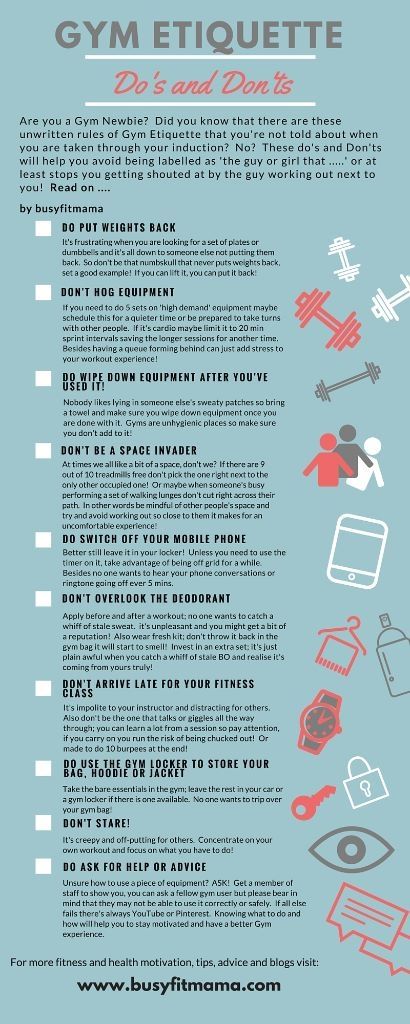
And yes — I do talk a lot about movement, and I even have labor movement cards with images you can use to help find a comfortable position in labor in The Online Prenatal Class for Couples.
Elective vs Medically Necessary Inductions
An elective induction is something you are choosing to do. Reasons can be:
- You have childcare for a specific day
- Your husband can come on a specific day
- Your doctor is available on a specific day
- Your doctor just thinks you should have the baby
- You are tired or miserable being pregnant with no specific medical issues.
Medically Necessary Inductions
Often medically necessary inductions happen before you are due. I have a whole post on 37 week inductions.
These are done because providers feel baby’s health will be better outside your womb, than inside.
A medically necessary induction can happen for a variety of reasons — I go into the vast majority of reasons in My Online Course, but the top few are:
Diabetes
Both gestational diabetes and type 1 or 2 diabetes can be a reason to be induced early as baby might be bigger, and you have an increased risk with pregnancy.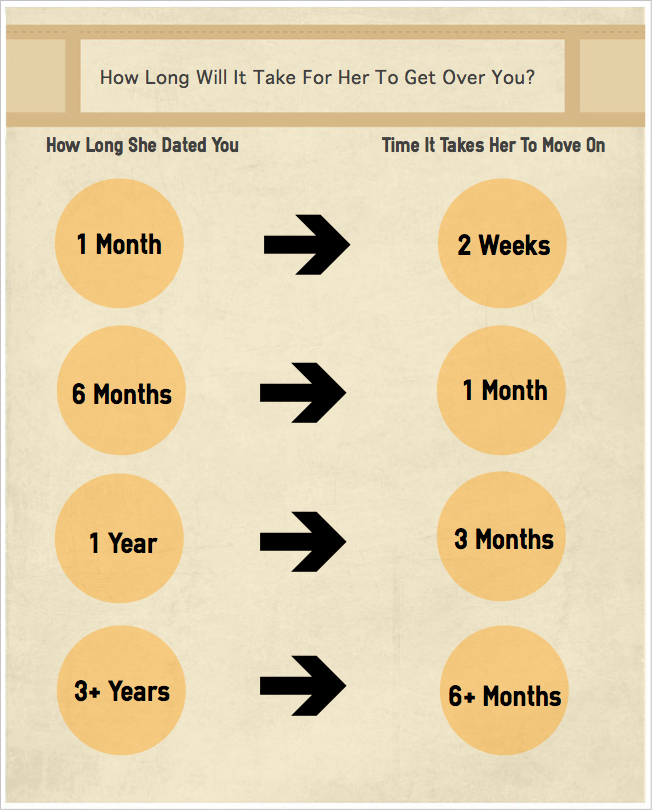
Baby Size
The baby’s size can always be a indicator to be induced.
Large Baby
If the baby is getting too large, it might not come out of your pelvis.
Small Baby
If the baby isn’t growing as it should, it is likely that we can help it grow better outside.
Too Much / Too Little Fluid
Oligohydramnios
This means that you have too little amniotic fluid. This can be problematic because baby needs to be surrounded by fluid to both protect it and the cord (and cushion it so it doesn’t get squished).
Polyhydramnios
This means you have too much amniotic fluid. This can be a problem to over-stretch your uterus, or too much room for baby.
Preeclampisa
This is a disorder of your smooth muscle caused by something in the baby/placental development. It is often characterized by high blood pressure or lab work changes with our urine and blood.
That means the only way to stop it is to get the baby out.
Which, is why you might need to be induced.
Other Reasons
Like I said, there are a lot of reasons why a doctor will induce you — these are just the most common.
Alright, so hopefully you understand that all of these come together to show how long your induction will likely be.
Textbook Labor Plan
If your baby read the textbook — it would know that average labor progresses about 1 cm per hour and then pushing begins.
However, most babies don’t read that book and labor can be tricky.
I find that the first 5 centimeters go longer than the last 5.
I also find that none of this starts until you’re actually IN LABOR (called active labor), and sometimes it takes a while to get there (often based on how thick or firm your cervix is).
Active labor is defined as the point when your cervix is dilating at least 1 cm’ish/hour.
With all that being said, if you’re induced early, an induction can sometimes even take 2-3 days, but if you’re induced after 40 weeks and have a very favorable cervix your baby could be out in just a few hours.
Which, I realize isn’t helpful at all. There is no shame in asking your doctor how long they think it will take (believe me, they have an educated guess), or asking your nurse once you’re in labor (it’s hard to tell until you’re in active labor and actually changing your cervix).
AND, finally — I am a big fan of letting mother nature take the lead and going into labor on your own. If you can avoid an induction I would recommend that if at all possible. But, sometimes it isn’t, so hopefully this article gave you some good info as well!
I know this all seems very complicated, but it really isn’t. Let me simplify it for you in Inductions Made Easy!
Or, if you’re not quite ready for that — grab my free birth prep kit:
- About the Author
- Latest Posts
Hilary Erickson, BSN RN
A nurse since 1997, she has worked in various fields including pediatrics, geriatrics & hospice.
She has 20 years of labor and delivery experience in the San Jose, CA and Phoenix, AZ areas.
She is also the curly head behind the website Pulling Curls and is the creator of The Online Prenatal Class for Couples — the #1 hospital-based prenatal class on the internet.
Arthur Conan Doyle. "The Adventures of Sherlock Holmes" • Episode transcript • Arzamas
You have Javascript disabled. Please change your browser settings.
CourseHow to read your favorite books in a new wayLecturesMaterialsWhat method did Sherlock Holmes actually use
Author Mikhail Velizhev
Sherlock Holmes is a native person for all of us, the inhabitants of Russia. He even spoke Russian! He even lived part of his life in Russia. Nobody knows about it, and Sir Arthur Conan Doyle didn't know about it either. But his Russian followers rather quickly described how it happened at the beginning of the 20th century. It turned out that there are two years in the life of Sherlock Holmes that Conan Doyle did not describe. We do not know where Holmes was at that moment - or we know approximately. And these are two years that share, on the one hand, the famous battle, the battle with Moriarty at the Reichenbach Falls, and on the other hand, the triumphant return of Holmes to London.
We do not know where Holmes was at that moment - or we know approximately. And these are two years that share, on the one hand, the famous battle, the battle with Moriarty at the Reichenbach Falls, and on the other hand, the triumphant return of Holmes to London.
Where was he? Here is the question that everyone is concerned about. It turns out that Holmes traveled around the Russian Empire. How he mastered the Russian language is unknown, but he mastered it. And he solved cases in Russia and achieved incredible success and fame. This, in particular, was mentioned in the story of the little-known Russian writer Mikhailovich, which was called "The Three Emeralds of Countess V.-D."
Thus, at the end of the 19th and beginning of the 20th century, Holmes became incredibly popular. In the 20th century, his popularity grew - and, of course, it grew thanks to successful film adaptations. It is known that the best Sherlock Holmes is the Soviet Sherlock Holmes performed by Vasily Livanov, and the best Watson is the Soviet Watson, Vitaly Solomin. And the film is really successful, and filmed with irony (which only made this film more beautiful).
And the film is really successful, and filmed with irony (which only made this film more beautiful).
Modernity knows another extremely successful film production of Sherlock Holmes. This is a film with the famous actor Cumberbatch as Holmes. And what is significant - this modern Sherlock Holmes still successfully solves seemingly incredible riddles and puzzles that are very difficult, impossible to decipher at all. And on the other hand, he operates in the modern world with ultra-modern technologies; in a world where there are no more distances, it is transported in a fraction of a second from one part of the globe to another. And yes, this Sherlock Holmes is really impressive.
Why Sherlock Holmes fascinates us so much
Let's go back to Conan Doyle and to the literary construction that he came up with more than 100 years ago. What exactly fascinates us and continues to fascinate us in this literary hero, who seems to really exist in reality?
It's clear here: there are banal things. On the one hand, this is the charm of Holmes, his elegance, courage, determination, irony - his ability to ridicule opponents. Knowledge that often surprises and amaze us. But, of course, the most important and remarkable thing is how lightning fast, in a few seconds, he tells about another person something that, it would seem, no one can know by definition.
On the one hand, this is the charm of Holmes, his elegance, courage, determination, irony - his ability to ridicule opponents. Knowledge that often surprises and amaze us. But, of course, the most important and remarkable thing is how lightning fast, in a few seconds, he tells about another person something that, it would seem, no one can know by definition.
First of all, I have in mind the famous episode with the watch, when Holmes asks Watson for a watch, looks at the dial for a long time (in fact, not so long: a few seconds) and tells the story of Watson's unfortunate brother. This is a text called "The Essence of Holmes's Deductive Method", to which we will return. This is the most important explanation of how Holmes comes to his own conclusions. Here is what Holmes tells the surprised, amazed Watson, who does not believe that Holmes found out all this by looking at the dial, and thinks that Holmes, of course, deceives him, laughs at him and knew in advance in some incomprehensible way about the fate of his brother %
“Your brother was a very disorderly, frivolous and sloppy person.
He inherited a decent fortune, he had a future ahead of him, but he squandered everything, lived in poverty, although sometimes fortune smiled at him. In the end, he drank himself and died."
Watson is perplexed. He does not understand what is happening, and suspiciously asks Holmes: how does he know all this? And Holmes says: no, no, it seems to you now that I did some inexplicable thing. In fact, everything is quite simple. Now, says Holmes, I will explain to you, Watson, how I came to this conclusion! Here is one of Holmes's arguments:
“... take a look at the bottom cover, in which there is a hole for the key. See how many scratches are the traces of the key, which do not immediately fall into the hole. A person who does not drink does not have such scratches on his watch. Drunkards always have them. Your brother wound up his watch late at night, and look how many marks his unsteady hand left! What is so wonderful and mysterious about all this?”
Really: so what? Holmes himself answers this question. We are talking about deduction, that is, an accurate, error-free method of inference that guarantees Holmes a 100% result. Or almost 100%. We know that Holmes is not mistaken. With rare exception. There is a story with the participation of Irene Adler, in which, due to a sudden outbreak of passion, if such a term is applicable to Holmes at all, Holmes made several logical errors that did not allow him to complete the matter. Or, of course, we can suspect Watson of not telling us about Holmes' failures... And it is very likely that some cases from Holmes's practice could remain outside the narrative.
We are talking about deduction, that is, an accurate, error-free method of inference that guarantees Holmes a 100% result. Or almost 100%. We know that Holmes is not mistaken. With rare exception. There is a story with the participation of Irene Adler, in which, due to a sudden outbreak of passion, if such a term is applicable to Holmes at all, Holmes made several logical errors that did not allow him to complete the matter. Or, of course, we can suspect Watson of not telling us about Holmes' failures... And it is very likely that some cases from Holmes's practice could remain outside the narrative.
One way or another, Holmes unmistakably identifies the criminal, the person's past, what the person did this morning or last night - and these are the magical abilities that enchant us, bind us to this character and make us incredibly sympathize with him in a variety of cases.
How the deductive method works
This is where, apparently, it is necessary to understand the mechanics of Holmes's conclusions. To understand whether he really knows - or whether he still guesses. Although brilliant - but still guessing? We need to understand first of all what deduction is. The same deductive method that Holmes calls his main tool.
To understand whether he really knows - or whether he still guesses. Although brilliant - but still guessing? We need to understand first of all what deduction is. The same deductive method that Holmes calls his main tool.
Deduction is a strict method of inference that starts from the general, goes to the particular (now I will show how this happens) and guarantees a 100% result, a 100% hit. One of the most important theorists of deduction and logical reasoning in general at the end of the 19th century was the philosopher Peirce, who introduced an extremely simple and convincing way to talk about rather complex logical constructions. He used the example of beans.
Imagine that we have a bag of white beans. We are absolutely sure that there are no other beans in the bag, except for white ones. We know that there are beans from this bag in front of us. We see how they are in front of us. What one hundred percent conclusion about the color of these beans can we draw? Of course they are white. This is exactly how deduction works.
This is exactly how deduction works.
We have absolutely certain knowledge about all the beans that are in the bag, we know that they are white. And as soon as we remove any bean from this bag, we can firmly say about it that it will be white. It's almost impossible to go wrong. This is precisely the deduction, the deductive consequence of the rule, which in this case tells us that all the beans in this bag are white.
In theory, Holmes should act this way every time. We will now see whether this is actually the case and whether he acts in this way. But it is important to first say what deduction opposes, what is not such a strict method, and what is, on the contrary, an arbitrary method.
What is induction
Let's turn to the type of reasoning called "induction". If the deduction proceeds from the general to the particular and, due to this, makes a completely correct guess (in this case, about the color of the beans), then the induction works in the opposite way. On the basis of the particular, a conclusion is made about the general.
On the basis of the particular, a conclusion is made about the general.
Let's continue Pierce's example with beans. Imagine that we have beans in front of us, which are taken from this particular bag. We see that these beans are white. A person who follows the inductive method will conclude that all the beans in this bag are white.
What is the main problem with this kind of reasoning? We didn't check all the beans in the beginning. We do not know what kind of beans are in the bag, but draw a conclusion based on a particular case. As you understand, this is absolutely not the case. It is easy to imagine that there are also, say, brown beans in the bag. And then the inductive method leads nowhere.
There is another example known to everyone who has ever been to a pond where swans swim. We often see only white swans. On this basis, a person who follows the inductive method will conclude that all swans in the world are white. Meanwhile, this is not true, since it is reliably known that there are black swans. And we can easily imagine a situation in which swans in Moscow (or in Russia) are white. Black swans do not live in Russia. But meanwhile, somewhere (perhaps in New Zealand) there are black swans.
And we can easily imagine a situation in which swans in Moscow (or in Russia) are white. Black swans do not live in Russia. But meanwhile, somewhere (perhaps in New Zealand) there are black swans.
Until we study all the swans together, we will not build a strict deductive statement, statement. That is why it is so essential for deduction and less essential (not at all essential!) for induction, the initial knowledge of all the facts, all the characteristics of a given kind of phenomena. In our case, these were white beans from a bag.
How Holmes realized that Watson served in Afghanistan
How does Sherlock Holmes come to his conclusions? Obviously, he does not use induction. I have not checked all the texts about Sherlock Holmes - maybe somewhere inductive reasoning is found, but in general these are not inductive statements. He goes from the general to the particular, not from the particular to the general. And it is very important that Holmes himself, in one of the fragments, says to Watson (who is constantly at a loss as to how Holmes manages to know everything about everyone) a rather eloquent phrase, which I ask you to remember, because then it turns out that this is not quite the case. . Holmes says: “I never guess. A very bad habit: it has a disastrous effect on the ability to think logically. Yes, it's about guesswork. Guessing is bad. This is not Holmes' way of solving crimes and mysteries, and in general he considers divination - we can perhaps say "inductive divination" - to be a vicious tool of logical reasoning.
. Holmes says: “I never guess. A very bad habit: it has a disastrous effect on the ability to think logically. Yes, it's about guesswork. Guessing is bad. This is not Holmes' way of solving crimes and mysteries, and in general he considers divination - we can perhaps say "inductive divination" - to be a vicious tool of logical reasoning.
At the same time, when we start to look at how Holmes argues, we suddenly find that there are quite a few exact deductive statements in his reasoning. Precise, firm statements based on one hundred percent certainty, which, in turn, is based on reliable knowledge of all phenomena.
In order to check the extent to which we have a fortune-telling or a tough, solid, logically verified deduction, I propose to analyze the episode described in the famous story "A Study in Scarlet", where Holmes and Watson get to know each other. Let me quote, and then, step by step, I will analyze the conclusions that Holmes makes.
"Hello! Holmes said amiably, shaking my hand with a force that I could never suspect of him. "I see you lived in Afghanistan." Indeed, the reader by this point already knows that Watson served as a surgical assistant in the 5th Northumberland Rifles, in which he took part in the Second Anglo-Afghan War. He participated in the battle of Maiwand, was wounded, then fell ill with typhus, barely survived, and finally was sent to England, because a military career was already closed for him.
"I see you lived in Afghanistan." Indeed, the reader by this point already knows that Watson served as a surgical assistant in the 5th Northumberland Rifles, in which he took part in the Second Anglo-Afghan War. He participated in the battle of Maiwand, was wounded, then fell ill with typhus, barely survived, and finally was sent to England, because a military career was already closed for him.
What are these historical events? This will be important to us. This is the Second Anglo-Afghan War, which lasted from 1878 to 1880, during which Britain sought to assert its colonial rule over Afghanistan. The war went on with varying success: either the Afghans or the British won. The battle mentioned by Conan Doyle took place on July 27, 1880, near a village called Maiwand. Watson participated in it, and there the British were defeated. As a result, the British agreed with Emir Abdur-Rahman, one of the representatives of power in Afghanistan, after which they left the country. We know that even before the end of the war, Watson himself left the country.
We return to the episode with acquaintance. Watson is perplexed: how does Holmes know that he was in Afghanistan? And Holmes begins to explain to him:
“The course of my thoughts was this: “This man is a doctor by type, but he has a military bearing. So, a military doctor. He has just arrived from the tropics - his face is swarthy, but this is not the natural shade of his skin, since his wrists are much whiter. His face is emaciated - obviously, he has suffered a lot and endured the disease. He was wounded in his left hand - he holds it motionless and a little unnaturally. Where, under the tropics, could an English military doctor suffer hardships and get wounded? Of course, in Afghanistan." The whole train of thought did not take even a second.
Again, in a magical way, Holmes solves a difficult riddle. The effect is all the stronger because Conan Doyle has already given readers some of the information about Watson. And when readers - you and I - turn to this fragment, we immediately recognize Watson in this description. And Holmes' magic intensifies.
And Holmes' magic intensifies.
But let's look at this reasoning more carefully. In fact, we have before us not one reasoning, but a whole logical chain. First fragment. Doctors with military bearing should be military doctors. In other words, there is no doctor with a military bearing who would not serve in the army. Let's assume that this is the case - although in fact this rule in itself is probably not a rule. One can imagine the situation in which a civilian doctor finds himself in a war. But suppose we are sure that Holmes knows for sure. And then we will have the following logical construction: all doctors with a military bearing are military doctors. Before us is a doctor with a military bearing. Therefore, we have a military doctor.
With all the reservations that we have made, it is obvious that we have before us an example of pure deduction. As in the case of beans, when we looked at all the beans and made sure that they are all white, so here: we are sure that there can be no other doctor than a doctor with a military bearing. Therefore, the conclusion is correct. Holmes can one hundred percent claim that Watson is a military doctor.
Therefore, the conclusion is correct. Holmes can one hundred percent claim that Watson is a military doctor.
Let's move on. Any person with a strong tan can only come from the tropics or from a zone close to them. And this is also true - with some caveats that a strong tan or swarthy skin color may indicate a stay in a different climatic zone, where the sun is also very strong. But suppose that such an effect is such and only such! - give only the tropics or zones that are close to the tropics. Thus, we again have a deductive statement.
But then something breaks in this mechanism. Every person who has suffered an illness and suffered in life has a haggard face. This statement is not, in my opinion, purely deductive. That is, it is not 100% correct. In order for it to be one hundred percent true, it should sound like this: “Everyone who has suffered an illness and suffered has a haggard face. Before us is a person who was ill and suffering in the past - therefore, we are facing a person with a haggard face. However, for anyone who looks at the relevant passage from Conan Doyle, it is easy to see that Holmes does not reason in this way. Holmes, on the contrary, comes to the conclusion that a person was ill and suffered in the past. He does some violence on the deductive scheme. I will return to this example.
However, for anyone who looks at the relevant passage from Conan Doyle, it is easy to see that Holmes does not reason in this way. Holmes, on the contrary, comes to the conclusion that a person was ill and suffered in the past. He does some violence on the deductive scheme. I will return to this example.
The failure of logic occurs, in my opinion, in the following reasoning. If a person is wounded in the left hand, then it is either motionless or in an unnatural state. It doesn't look like the truth. We can imagine a person who was injured under some other circumstances. This is not pure deduction, here the rule itself is at least non-obvious.
The crown of Holmes' reasoning, in which he brings together all the previous ones. Tropics, military doctor, injury and deprivation. All this points to the Anglo-Afghan war. To draw such a conclusion, in the case of deductive reasoning (that is, a conclusion based on one hundred percent knowledge of all the facts), it is necessary to know for sure that England fought in Afghanistan in 1880 and only in Afghanistan - in the tropics or in climatic zones close to the tropics.
However, a cursory review of the countries in which the British army, known in the 19th century for its combat capability, fought, will show us that Holmes is wrong! There was another war - and, therefore, this is not a deductive statement. In 1878-1879, Britain fought against the Zulus in South Africa, and South Africa is in a climate zone that is quite close to the tropics. Theoretically, Watson could have been in South Africa.
Thus, we see that the problem exists at the level of the rule - and, moreover, this problem gives us not a deductive statement, but some other one (we will now move on to this).
The writers of the modern Cumberbatch series have deftly circumvented this obstacle. Let us recall the famous scene in the morgue (also, I must say, quite impressive): the acquaintance occurs at the moment when Sherlock Holmes examines the corpses. He sees Watson and asks, "Afghanistan or Iraq?" Watson answers him: “Afghanistan,” and then Holmes launches this refined, precise mechanism of solving.
The creators of the series show that in order to build a clear deductive statement, Holmes needs to know whether Watson fought in Afghanistan or Iraq. In the same way that Conan Doyle apparently needed Holmes to ask Watson whether he was fighting in Afghanistan or South Africa. This does not happen, but we, of course, are completely fascinated, fascinated by the omnipotence of Holmes, his intellectual power, his ability to solve seemingly completely unexpected riddles and tell Watson about his past. And Watson opens his mouth, looks at it all and says: "How did you guess?" Holmes explains to the surprised Watson that all this is quite simple, and from his explanations it becomes clear that we are dealing not with purely deductive statements, not with inductive ones, but with some other ones. How does Holmes reason? The vast majority of his conclusions fall under the third category of logical assertion, which is called the word "abduction". What is abduction? Let's continue with Peirce's bean example.
How Abduction Works
It is very important to know that abduction also comes from a rule, and in this sense it has the appearance of certainty. We tend to trust abductive statements. The rule that we formulated earlier is as follows: "All the beans from this bag are white." Let's imagine the bag again: we looked inside, looked and found that all the beans are white.
These beans are white. These beans, we conclude, were taken from this bag. Such an inference (once again, this is important) is based on a rule, and in this sense we tend to trust it. However, in essence, we have a method of guessing. We see white beans, we see a bag, we know for sure that there are white beans inside, and we put forward a hypothesis, we speculate that these beans came to the table from this very bag. The likelihood that this is the case is quite high. However, as you understand, everything is much more tricky. Let's imagine that the person who is standing next to us hides another similar bag of white beans behind his back. And beans can be taken from the second bag, and not from the first.
And beans can be taken from the second bag, and not from the first.
In other words, in order to build a deductive statement, we need to examine all the bags and be absolutely sure that we have no other bags besides this one. However, this does not happen. Therefore, we put forward a hypothesis and then test it. Strictly speaking, this is how Holmes operates. He hypothesizes endlessly: about Watson, about other characters, about watches, about objects, about situations, about matches, anything. He puts forward hypotheses, which are then subject to testing. And checking in the vast majority of cases tells us that yes, Holmes is right!
Where Holmes' reasoning is not so accurate
To see how this works in the Sherlock Holmes stories, let's go back to one of the examples we've already looked at. Everyone who has had an illness and suffered has a haggard face. I think this is just beyond doubt. Indeed, if we are sick or if we suffer deeply, very often, almost always, traces of suffering and experiences remain on our face. Once again: everyone who has had an illness and suffered has a haggard face. Before us is a man with a haggard face, in this case Watson himself. Before us is a person who was ill and suffering in the past.
Once again: everyone who has had an illness and suffered has a haggard face. Before us is a man with a haggard face, in this case Watson himself. Before us is a person who was ill and suffering in the past.
What is wrong with this reasoning? We know from the narrative that this is actually the case. Watson was really ill, he suffered: typhus, wound, and Holmes is right. But meanwhile, a haggard face is very often the result of hard work. The example Holmes sees, Watson's haggard face, may actually refer to another rule: "Everyone who has worked hard has a haggard face." And then the whole picture that Holmes so deftly draws can be completely different.
The logic in an abductive statement is greatly weakened. Holmes is actually putting forward hypotheses that may or may not be right. Another thing is that often Holmes' guesses are justified. That is, we are dealing, if you like, with a good abduction. His hypotheses best explain to us the body of facts that the narrator (or author, Conan Doyle himself) puts at the disposal of the reader.
Holmes is the best at explaining what really happened to the characters. Let us recall the funny and touching dialogues between Lestrade and Holmes. Lestrade is a representative of Scotland Yard, he is a policeman and has to put forward some hypotheses, and he considers himself a pretty solid person and logician. He keeps saying: no, no, here, in fact, the reason for what we see is that ... And Holmes, in a split second, with the help of a completely different logical statement, refutes Lestrade's clumsy reasoning.
Another thing is that we are still dealing with abduction, that is, with an inference in which the logical connections are weakened, in which the observed case can refer to several rules at once. Holmes (we can draw such a conclusion on this basis), with all his intellectual equipment, is guessing. And he guesses. Before us is a good abduction.
Why Holmes always hits the mark when he guesses
Holmes often reproaches Watson, who describes their adventures, with the fact that the stories are too artistic. That Watson does not convey the beauty of Holmes' reasoning. That he is not scientific enough. That Holmes's method (and we know that Holmes publishes in serious scientific journals) is not sufficiently covered in those glib stories that Conan Doyle attributes to Watson. Meanwhile, the story that we analyzed earlier shows that Holmes does not really work with precise mathematical logic; in fact, there is no deductive precision in his reasoning.
That Watson does not convey the beauty of Holmes' reasoning. That he is not scientific enough. That Holmes's method (and we know that Holmes publishes in serious scientific journals) is not sufficiently covered in those glib stories that Conan Doyle attributes to Watson. Meanwhile, the story that we analyzed earlier shows that Holmes does not really work with precise mathematical logic; in fact, there is no deductive precision in his reasoning.
We forget that we are dealing with a literary text. And the literary text is arranged according to a certain principle: the author makes the reader believe in his own fiction. This fiction is the deductive method of Sherlock Holmes! Holmes is never wrong because Arthur Conan Doyle wants it that way. And not at all because he uses a solid logical deductive method.
How is Sherlock Holmes' method similar to the method of historians
Of course, this does not negate the fact that deduction, induction and abduction are quite real logical constructions. And the most interesting thing in this situation (and complex, and, perhaps, beautiful) is that the fiction that we just talked about prompted quite serious scientists to develop their own scientific method. In 1983, a collection of articles “The Sign of Three” was published, by analogy with “The Sign of Four” by Conan Doyle, in which European scientists, and not only European ones, well-known, including to the Russian reader, discussed in detail how reasoning is built Holmes. It was a collection in which famous intellectual researchers Umberto Eco and Carlo Ginzburg took part. So, it turned out that the abductive method of Holmes (or Conan Doyle, whatever) has a strange and at first glance completely non-obvious connection with the way historians work. Just this point of view was defended by Carlo Ginzburg in his famous "Clue paradigm" ("clue" - from the word "evidence", as in detective).
And the most interesting thing in this situation (and complex, and, perhaps, beautiful) is that the fiction that we just talked about prompted quite serious scientists to develop their own scientific method. In 1983, a collection of articles “The Sign of Three” was published, by analogy with “The Sign of Four” by Conan Doyle, in which European scientists, and not only European ones, well-known, including to the Russian reader, discussed in detail how reasoning is built Holmes. It was a collection in which famous intellectual researchers Umberto Eco and Carlo Ginzburg took part. So, it turned out that the abductive method of Holmes (or Conan Doyle, whatever) has a strange and at first glance completely non-obvious connection with the way historians work. Just this point of view was defended by Carlo Ginzburg in his famous "Clue paradigm" ("clue" - from the word "evidence", as in detective).
It is important here that the work of a historian is likened by Ginzburg to the work of a detective. Like a detective, the historian does not know much about the past. The past is a certain set of information that is known from sources, but also a set of dark spots that sources speak about indirectly, about which we do not have reliable information. And the abductive mechanism that Holmes uses turns out to be very convenient and quite adequate when talking about what historians do. The historian puts forward hypotheses - which, of course, he then thoroughly tests.
Like a detective, the historian does not know much about the past. The past is a certain set of information that is known from sources, but also a set of dark spots that sources speak about indirectly, about which we do not have reliable information. And the abductive mechanism that Holmes uses turns out to be very convenient and quite adequate when talking about what historians do. The historian puts forward hypotheses - which, of course, he then thoroughly tests.
Naturally, a historian cannot 100% test all his hypotheses. But this hypotheticality, this striving for conjecture, this certainty that in the sciences of man the truth is achieved not in a mathematical way, but precisely through conjecture, through bold reasoning, through insight, just connects the detective and the historian. Connects those who are now engaged in science and Sherlock Holmes. And in this sense, Sherlock Holmes may not be such a literary character after all. Maybe there are men of science somewhere who act in the same way. And it would be interesting to check and see it.
And it would be interesting to check and see it.
In the future, Ginzburg will compare the work of a historian with how a judge acts. However, this will be a completely different story.
P.S.
If we talk about the stories or stories about Sherlock Holmes that made the biggest impression on me, then one text will stand much higher than all the others. This is the Hound of the Baskervilles. First of all, because Holmes, throughout most of the story (as it seems to us, the readers), finally deals with the other world. I am terribly fond of Gothic novels and mystical literature in general, and when I first read The Hound of the Baskervilles, I thought: “Finally, Holmes will fight a real opponent, with whom all his logical tricks do not work.”
Then the matter turned out to be completely different, and, of course, this dog - alas, not some otherworldly hellish dog that devours members of the Baskerville family, but a real dog, only very big, and there is nothing mystical here . .. But the expectation! This expectation is maintained by Conan Doyle long enough, he keeps us in suspense: what is in front of us? And, honestly, I, too, was sure, by a sinful thing, that this dog was a terrible ghost. But alas and ah. Still, Holmes in Conan Doyle mostly encounters quite everyday, prosaic, albeit rather fascinating situations.
.. But the expectation! This expectation is maintained by Conan Doyle long enough, he keeps us in suspense: what is in front of us? And, honestly, I, too, was sure, by a sinful thing, that this dog was a terrible ghost. But alas and ah. Still, Holmes in Conan Doyle mostly encounters quite everyday, prosaic, albeit rather fascinating situations.
Fact check: 14 most popular legends about Chapaev
Was Chapaev an illegitimate son of a governor's daughter and a wandering gypsy artist? Trotsky wanted to shoot him, but Stalin, on the contrary, adored him? Chapaev didn’t actually die and worked as a carpenter until the end of his days? In the new issue of the column, we talk about the legendary commander of the Red Army
Do you want to be aware of everything?
Subscribe to our newsletter, you'll love it. We promise to write rarely and on business
Courses
All courses
Special projects
Lectures
35 minutes
1/16
Alexandre Dumas.
 The Three Musketeers
The Three Musketeers Why is the novel The Three Musketeers so called and does Cardinal Richelieu resemble his prototype
Reading Maria Neklyudova
Why is the novel The Three Musketeers called so and does Cardinal Richelieu resemble his prototype
2/16
Walter Scott. "Ivanhoe"
How "Ivanhoe" teaches to seek a compromise and why there are so many factual inaccuracies in the book
Reading by Alexander Dolinin
How Ivanhoe teaches to find a compromise and why there are so many factual inaccuracies in the book
34 minutes
3/16
Rafael Sabatini. Captain Blood's Odyssey
How much did slaves cost in Captain Blood's time and why is his pirate crew so disciplined
Reading Yulia Vymyatnina
How much did slaves cost in Captain Blood's time and why is his pirate crew so disciplined
29 minutes
4/16
Robert Louis Stevenson. Treasure Island
Who was the prototype of Captain Flint and why the cruelty of pirates was often exaggerated
Reads Yulia Vymyatnina
Who was the prototype of Captain Flint and why the cruelty of pirates was often exaggerated
32 minutes
9006 5 "Mysteries of Paris"How Eugene Xu, with the help of an action-packed detective, tried to solve important social issues
Reading by Vera Milchina
How Eugene Xu tried to solve important social issues with the help of an action-packed detective
34 minutes
6/16
Alexandre Dumas.
 The Count of Monte Cristo
The Count of Monte Cristo Where Dumas took the plot for his novel and what the book tells about internal conflicts in France
Reading Vera Milchina
Where Dumas took the plot for his novel and what the book tells about internal conflicts in France
30003 minutes7/16
Arthur Conan Doyle. "The Adventures of Sherlock Holmes"
What method did Sherlock Holmes actually use
Reads Mikhail Velizhev
What method did Sherlock Holmes actually use
35 minutes
8/16 90604 Jane Austen "Pride and Prejudice"
Why Jane Austen was so carried away by the theme of vision and optics in her novel
Reading Tatyana Smolyarova
Why Jane Austen was so carried away by the theme of vision and optics in her novel
35 minutes
9/16
Charlotte Bronte. "Jane Eyre"
Why children in Jane Eyre's time were constantly frightened of hell and why translators interpreted the novel's ending differently
Reading Alexandra Borisenko
Why children in Jane Eyre's time were constantly frightened of hell and why translators interpreted the novel's ending differently
30 minutes
10/16
J.
 R. R. Tolkien. The Lord of the Rings
R. R. Tolkien. The Lord of the Rings How Tolkien conceived the world of Middle-earth and re-posed major ethical questions
Reading Nicholas Epple
How Tolkien invented the world of Middle-earth and re-posed the main ethical questions
32 minutes
11/16
Herman Melville. Moby Dick, or the White Whale
How a strange book about whalers, which no one understood at first, became the main American novel
Reading by Tatyana Venediktova
How a strange book about whalers, which at first no one understood, became the main American novel
27 minutes
12/16
Arthur Conan Doyle. The “lost world”
as a book about dinosaurs tells about racial prejudices of the early XX century
reads Natalia Mazur
as a book about dinosaurs talks about racial prejudices of the 20000th century
32 minutes
Genrik Senkevich. “Kamo are coming”
How slaves and gladiators lived in Ancient Rome and how the author of books on Polish history managed to accurately describe the times of Nero
Reading Alexander Butyagin
How slaves and gladiators lived in Ancient Rome and how the author of books on Polish history managed to accurately describe the time of Nero
30 minutes
14/16
Victor Hugo.
 Notre Dame Cathedral
Notre Dame Cathedral How Hugo Aroused Interest in the Middle Ages and Saved Notre Dame from Demolition
Reading Pavel Uvarov
How Hugo Aroused Interest in the Middle Ages and Saved Notre Dame from Demolition
9003 38 minutes
38 minutes 16
Walter Scott. Quentin Dorward
What can be learned from an adventure novel about political processes in Europe at the end of the 15th century
Ekaterina Shulman is reading*
What can be learned from an adventure novel about political processes in Europe at the end of the 15th century
45 minutes 16
Charles Dickens. "David Copperfield"
How does the life of David Copperfield resemble the life of Dickens himself
Reading Ksenia Gusarova
How does the life of David Copperfield resemble the life of Dickens himself
Materials
11 words to help understand Elvish culture
Talking about Quenya and Sindarin, the languages that Tolkien invented
Are these writers twins?! Distinguish Dickens from Mine Reed, and Swift from Defoe
What the authors of famous novels looked like in portraits and photographs
Guess the book by its cover
Do you remember the Adventure Library series? Take our quiz and identify the titles of the books
Sherlock Holmes or Vasily Livanov?
Try to tell the book from the movie
"I haven't read The Master and Margarita. " Confession game!
" Confession game!
Tell your friends about the book everyone has read but you haven't
Which Brontë sister are you?
Take the quiz and find out if you are Ann or Emily. Or maybe Charlotte?
D'Artagnan or Mikhail Boyarsky?
Try to distinguish the book from the movie
About the projectLecturersTeamLicencePrivacy policyFeedback
Arzamas Radio GooseGooseArzamas stickers
OdnoklassnikiVKYouTubePodcastsTwitterTelegramRSSHistory, literature, art in lectures, cheat sheets, games and expert answers: new knowledge every day
© Arzamas 2022 From Russia? Instruction here
IVF => Q&A
IVF
List of services
- How effective is the IVF program?
The pregnancy rate averages 33-35% per cycle. It may be slightly higher or lower depending on the age, technologies used, in donor protocols, and so on. - Can I have an IVF program if I don't have a sexual partner?
Yes. There are various donor programs. By the way, it can be not only IVF, but also, for example, insemination.
There are various donor programs. By the way, it can be not only IVF, but also, for example, insemination. - How many IVF attempts can be done?
There is no official limit on the number of IVF attempts. In the practice of Russian specialists, there were cases when a woman was able to get pregnant only after 25 attempts, and the treatment lasted for years. - Can hormonal stimulation be harmful to health?
From the moment of birth, human health, something is constantly harming. Even physiological processes, such as pregnancy. In addition, there are always certain risks of complications with any treatment, including the most harmless drugs at first glance. It must be understood that ovulation induction is a procedure that affects the hormonal background and may be accompanied by complications. At the same time, reproductive technologies are developing rapidly and with new stimulation protocols, the likelihood of some complications is significantly reduced. Any appointment is always considered in the ratio of risk / benefit. In the case of IVF, the possibility of having a baby is a huge benefit.
Any appointment is always considered in the ratio of risk / benefit. In the case of IVF, the possibility of having a baby is a huge benefit. - How long does the IVF program last?
The duration of an IVF cycle depends on the stimulation protocol used. From the start of stimulation to the diagnosis of pregnancy, it can take from 3 weeks to several months. - What are the stages of the IVF program?
Classical IVF consists of several successive stages:
1. preliminary examination and development of treatment tactics;
2. preparation of spouses for the procedure - sanitation of foci of inflammation, elimination of endocrine disorders, and so on;
3. superovulation induction;
4. introduction of hCG for maturation of oocytes;
5. puncture of follicles and fertilization of the obtained oocytes;
6. cultivation of embryos;
7. transfer of embryos into the uterine cavity, cryopreservation of the remaining embryos;
8.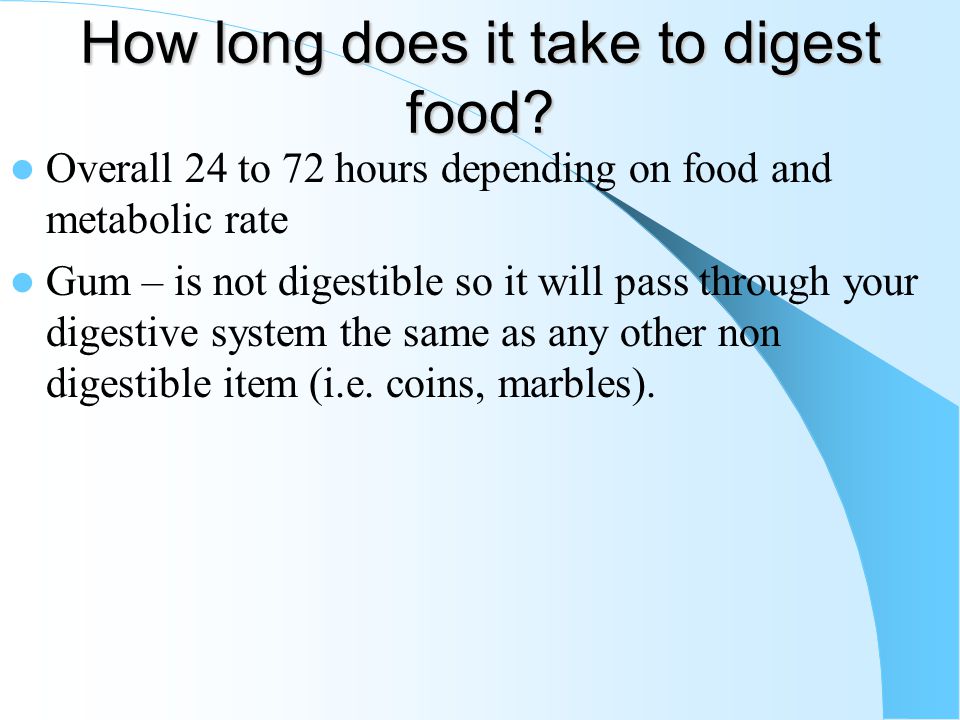 hormonal support for pregnancy;
hormonal support for pregnancy;
9. diagnosis of pregnancy;
10. management of pregnancy and childbirth.
- What is superovulation induction?
Superovulation induction - hormonal stimulation of the ovaries in order to obtain several follicles with maturing eggs. In the natural cycle, in the vast majority of cases, only one follicle matures. - Why is ultrasound control carried out in the IVF program?
Ultrasound monitoring allows you to track the growth of follicles and timely detect the development of a formidable complication - ovarian hyperstimulation syndrome. - Is it possible to do ultrasound in the IVF program in your city?
There is a so-called IVF transport scheme. You undergo examination and induction of superovulation with ultrasound monitoring at the clinic at your place of residence, and for puncture of follicles and replanting of embryos you come to the IVF center. The main thing is not to undergo ultrasound in ordinary clinics.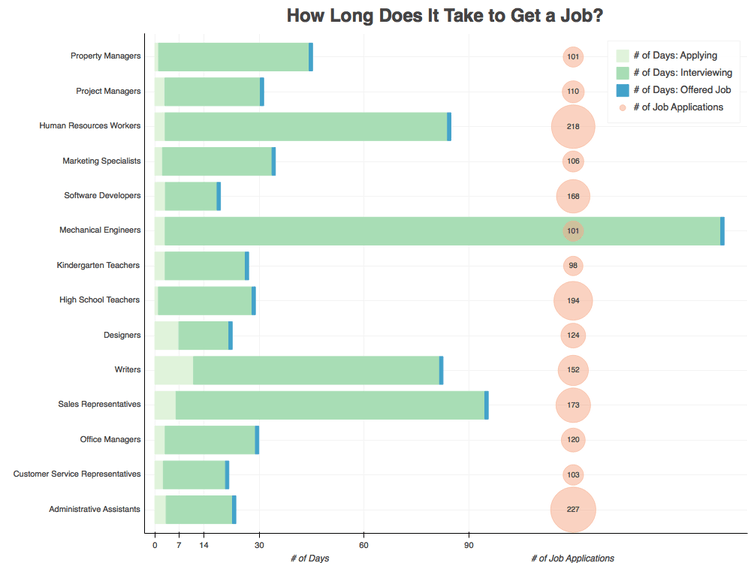 IVF does not forgive mistakes and any of its stages should be carried out by specialized specialists.
IVF does not forgive mistakes and any of its stages should be carried out by specialized specialists. - Is it possible to open a sick leave in the IVF program?
Undoubtedly. The hospital opens from the first day of ovulation induction until the diagnosis of pregnancy by hCG. At the same time, a woman can take sick leave at any stage of IVF. If the clinic where the treatment is carried out does not have the right to issue a sick leave, then this can be done in a regular state clinic. - What is an endometrial biopsy?
The sampling of a small area of the uterine mucosa to assess its cellular structure and identify various pathologies. As part of ART, the uterine factor of infertility is thus diagnosed. - What is ICSI?
Injection of a single spermatozoon into an oocyte. It is carried out with a special microsurgical instrument under multiple magnification. It is used to overcome infertility associated with the male factor.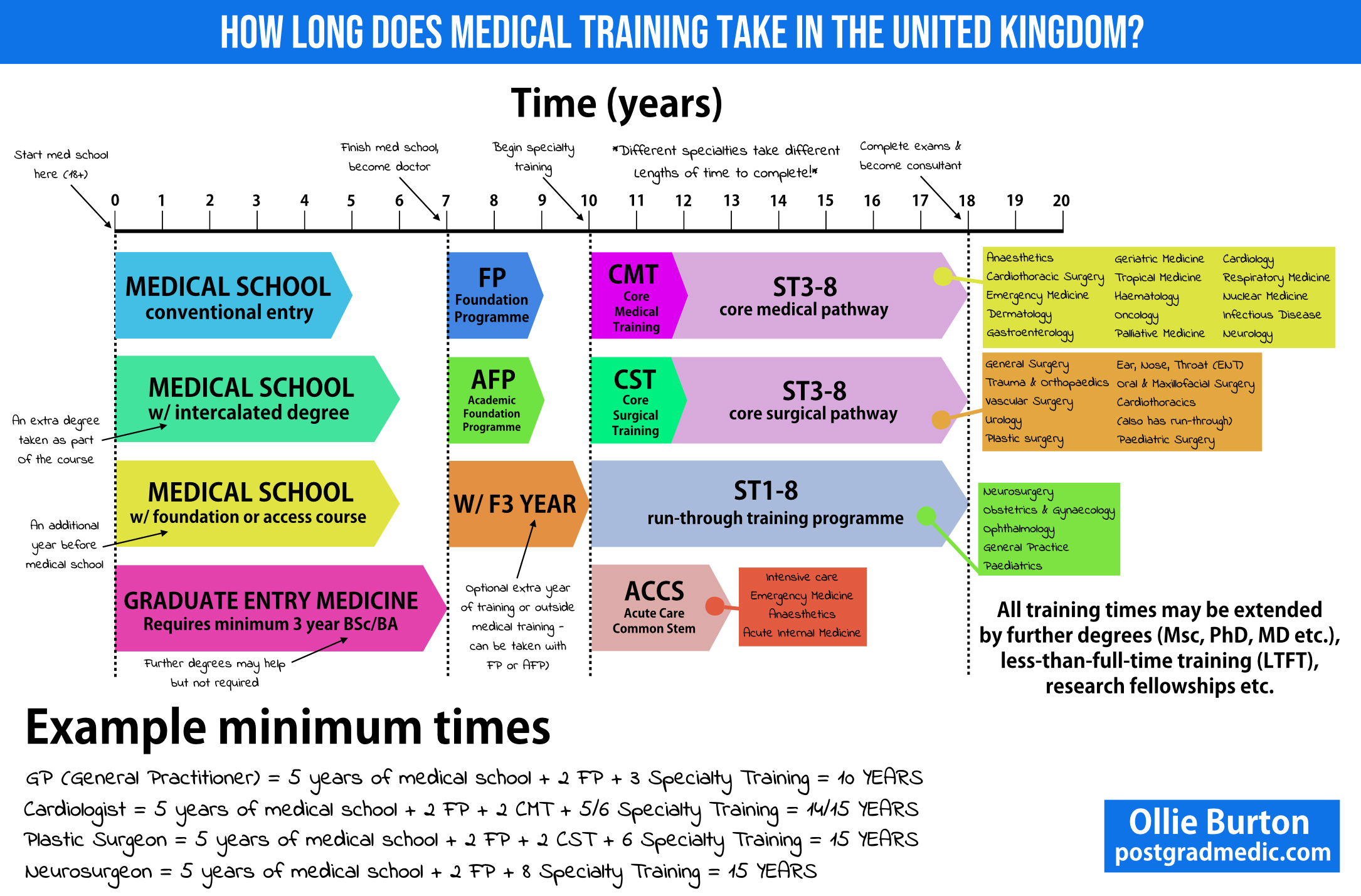
- Can ICSI be performed on request?
Doesn't make sense. If the clinic is well equipped, then if there are indications, the doctor himself will suggest this procedure... - How many embryos can be transferred into the uterus?
Today, 1-2, less often, 3 embryos are implanted. At the dawn of IVF, the number of transferred embryos reached 7-8. - Is it possible to play sports during IVF?
Yes, but without heavy loads. Sports that are accompanied by shocks, the risk of grass vibration, sudden movements are not recommended. Walking and swimming are ideal in this plan. - After what period of time can I do a second IVF?
This is quite an individual value. Usually the next attempt is recommended in 2-3 months, although in some cases it is possible already in the next cycle. - Why is hysteroscopy indicated?
Hysteroscopy allows you to assess the condition of the endometrium and identify pathological processes in it, such as polyps or endometriosis.
- How does severe ovarian hyperstimulation present?
Severe ovarian hyperstimulation syndrome manifests itself in the form of abdominal pain and abdominal disorders, hemodynamic disorders, edema, ascites. Any of these symptoms should be seen by a doctor immediately. - Is it always possible to determine the causes of infertility?
To date, no. For example, in the 2015 CDC report on the use of reproductive technologies in the United States, the proportion of patients with unexplained causes of infertility was 13%. - Why are the fallopian tubes examined?
The tubal factor of infertility is observed quite often. In some cases, it is possible to restore the patency of the Fallopian tubes by conservative and surgical methods without resorting to IVF, but in general, if ART is used for the tubal factor, then their effectiveness is relatively high - higher than in most other forms of infertility. - What is hysterosalpingography?
X-ray examination of the patency of the fallopian tubes to exclude the tubal factor of infertility.
- Why is an ovarian puncture performed?
Puncture of the ovary, or rather the follicles, is performed to collect mature eggs for in vitro fertilization. - Does IVF always result in multiple pregnancy?
No, and today it is less and less. The current IVF trend is the transfer of a single embryo. According to the report of the Russian Association of Human Reproduction, in 2015 the frequency of multiple births in IVF and ICSI programs was 19.7% of all births. - What is embryo reduction?
Interruption of embryonic development in multiple pregnancies. Multiple pregnancy dramatically reduces the effectiveness of IVF. In 2015 in Russia, only 14.7% of pregnancies after IVF with triplets or more ended in childbirth. - How does IVF affect children's health?
Studies that have compared the health of children born as part of ART and vaginally are very controversial and do not allow for a definitive conclusion. In terms of somatic pathology and neuropsychic development, no significant difference was found between children. Larger studies are needed to close this question.
In terms of somatic pathology and neuropsychic development, no significant difference was found between children. Larger studies are needed to close this question. - How to protect an unborn child from genetic diseases?
At the stage of embryo cultivation, it is possible to conduct preimplantation genetic screening, which will reveal disorders associated with the set of chromosomes in the embryo, for example, to determine Down's disease. - What is PGD?
Preimplantation genetic diagnosis (PGD) is a test that is prescribed if one of the parents is a carrier of a genetic pathology. During the procedure, the specialist examines the gene that could be transferred to the embryo by the parents. The use of the method in all couples with infertility does not make sense. - What are the indications for the use of donor oocytes?
In ART, donor eggs can be used in the following situations:
1. absence of oocytes as a result of natural menopause, developmental anomalies, removal of the ovaries or premature wasting syndrome.
2. inferiority of eggs in women with certain hereditary diseases.
3. unsuccessful IVF attempts, accompanied by a poor response to stimulation or low quality embryos.
- How developed is surrogate motherhood in Russia?
The essence of surrogate motherhood is that the embryo obtained as part of ART and belonging to the spouses is carried by a third person - a surrogate mother. In 2015, 1539 cycles were conducted in Russia with the participation of surrogate mothers, which led to the birth of 508 children. - What is intrauterine insemination?
Intrauterine insemination is one of the simplest ART, which involves the introduction of spermatozoa directly into the uterine cavity. For the procedure, the sperm of the husband or a donor can be used. - What are the contraindications for IVF?
All contraindications to the IVF procedure are given in Appendix 2 of the Order of the Ministry of Health of Russia No. 107n dated August 30, 2012. The document contains a list of about 7 dozen diseases of various organs and systems in which IVF cannot be performed.
107n dated August 30, 2012. The document contains a list of about 7 dozen diseases of various organs and systems in which IVF cannot be performed. - Is IVF possible for uterine fibroids or endometrioid cysts?
Uterine fibroids are a benign neoplasm, which is a contraindication to IVF, only if it requires surgical treatment.
Endometrioid cysts of any localization are not a contraindication to ART.
Name
Phone number
Question
I visit the clinic for the first time
I have a map
Choose a doctorKaryakina L.











